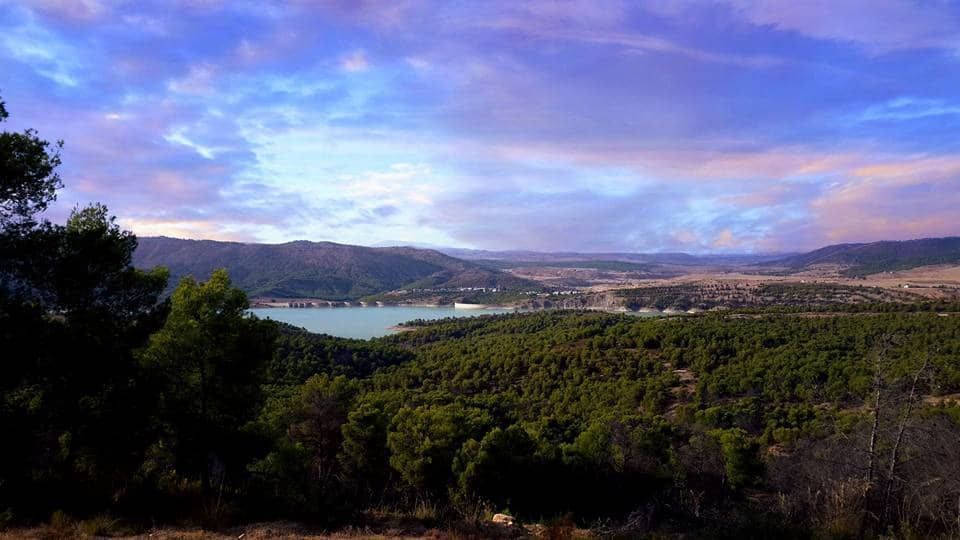Andalusian Arab Architecture: A Timeless Cultural Legacy
Andalusian Arab Architecture: A Timeless Cultural Legacy
Andalusian Arab architecture represents one of the most magnificent chapters in the history of Islamic art. Its influence remains clearly visible today in southern Spain and North Africa. This architectural style is not merely a collection of buildings, but a living embodiment of a long history of cultural interaction between East and West. It tells the story of a civilization that flourished in the Iberian Peninsula for eight centuries.

Origins and Development
Andalusian architecture began with the arrival of Muslims in the Iberian Peninsula in 711 AD, during the Umayyad era. It gradually developed through the periods of the Umayyad, Almoravid, Almohad, and finally the Nasrid dynasties in Granada. Each of these periods left its own distinctive mark on the architecture, but what they all had in common was beauty, precision, and creativity in the use of space and ornamentation.
Harmony between simplicity and complexity
One of the most distinctive features of Andalusian architecture is its unique ability to combine external simplicity with internal complexity. The exteriors of buildings often appear modest, but upon entering, the visitor discovers a world of rich details and exquisite ornamentation.
This characteristic is most clearly embodied in the
Alhambra Palace in Granada, a true masterpiece of art and architecture. Its walls are adorned with intricate geometric patterns, interwoven vegetal motifs known as arabesques, as well as Quranic verses and poetry carved in elegant Arabic calligraphy. These decorations are not merely ornamental—they are an integral part of the soul of the space, creating a sense of harmony and beauty that captivates the eye and soothes the spirit.
عناصر مميزة
Andalusian architecture is characterized by several key elements that give it its unique identity:
- Variety of Arches:
Notable examples include the horseshoe arch, which became a hallmark of this style, and the multifoil arch, commonly seen in the Great Mosque of Córdoba. These arches were not merely structural elements—they also served aesthetic and functional purposes, often used to highlight entrances and passageways.
- Inner Courtyard (Riyad):
The courtyard is the beating heart of the Andalusian home or palace. Typically open to the sky, it features a fountain or reflecting pool and a small garden. This design was not only a means of ventilation and cooling, but also a tranquil space for reflection and peace, reflecting the deep connection between humans and nature.
- Zellij and Mosaics:
Colorful, glazed ceramic tiles (zellij) were used to decorate walls and floors in intricate geometric patterns. These mosaics showcased the precision and craftsmanship of Andalusian artisans and added a vibrant touch of color and elegance to architectural spaces.
- Light and Water:
Andalusian architects understood the essential role of light and water in design. Buildings were constructed to allow natural light to filter in and create dynamic patterns of shadow, while water channels and fountains were used not only for cooling but also to introduce soothing sounds that enhanced the serene atmosphere of the space.
Local materials and innovative technologies
Andalusian architecture relied on simple, locally available building materials, but turned them into masterpieces.
Clay and plaster: Clay was used in building walls, while plaster was the basic material for sculpture and decoration. Skilled craftsmen precisely shaped the wet plaster, then added colors to it.
Wood: Wood was used to make complex ceilings, doors, and windows. Known for its elaborate geometric and floral carvings, Andalusian wood stands out clearly in the ceilings of the Alhambra.
Zellij:
The art of Zellij is one of the most prominent innovations of Andalusian architecture. It was not just a coloring of ceramics, it required great skill in cutting colored ceramic tiles into very precise geometric shapes and fitting them together to form complex patterns covering the walls.
Islamic art and its ability to create and transcend geographical and cultural borders.
Notable models worth exploring
If you're interested in delving deeper, here are some sites that embody the most beautiful images of Andalusian architecture:
Great Mosque of Cordoba: This mosque is considered a unique masterpiece in the history of Islamic architecture. It features double, multi-colored arches (red and white), which create a sense of spaciousness and mystery.
Alhambra Palace (Granada): represents the pinnacle of Andalusian architecture. It is not just a palace, but a miniature city containing palaces, gardens, and baths. It is distinguished by its plaster decorations that cover every inch of the walls.
Seville Palace:
Although influenced by the Castilian style, it clearly shows Andalusian influence in its main courtyard, the "Virgin Courtyard", which is decorated with tiles and plaster carvings.






